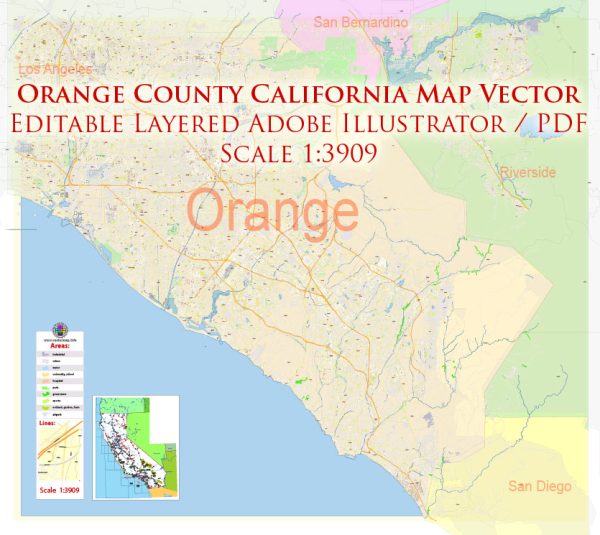Orange County, located in Southern California, has a rich history of urban development that reflects the broader trends of suburbanization and growth characteristic of the region. Here’s a brief overview of the key phases in the urban development of Orange County:
- Early Settlement and Agriculture (Late 19th Century):
- Orange County’s history begins with Native American populations, followed by Spanish and Mexican land grants in the 18th and 19th centuries.
- The area was primarily agricultural, with citrus groves becoming a significant part of the landscape.
- Post-WWII Boom and Suburbanization (1940s-1960s):
- After World War II, Orange County experienced a population boom driven by returning veterans, job opportunities, and the allure of the Southern California lifestyle.
- The G.I. Bill and the rise of the aerospace and defense industries contributed to economic growth.
- Suburbanization took hold as developers built tract housing and communities to accommodate the growing population.
- Freeway construction, such as the Santa Ana Freeway (I-5), facilitated commuting and accessibility.
- Emergence of Planned Communities (1960s-1980s):
- Planned communities, such as Irvine and Newport Beach, began to take shape during this period. The Irvine Company’s master-planned community, Irvine, is one of the most well-known examples.
- The emphasis on carefully planned residential, commercial, and recreational spaces became a hallmark of Orange County’s urban development.
- Economic Diversification and High-Tech Industries (1980s-1990s):
- Orange County transitioned from its reliance on aerospace to a more diversified economy, including the rise of the technology and healthcare sectors.
- The Irvine Spectrum area developed as a hub for technology and innovation.
- Cultural and Economic Expansion (2000s-Present):
- The opening of the Disneyland Resort in Anaheim in the 1950s marked the beginning of Orange County’s association with tourism and entertainment.
- The county continued to attract businesses and residents, and areas like the Anaheim Resort District and the South Coast Metro became prominent economic and cultural centers.
- Challenges and Changes in the 21st Century:
- The 21st century brought challenges such as housing affordability, traffic congestion, and the need for sustainable development.
- Efforts have been made to address these challenges through urban planning, transportation initiatives, and a focus on mixed-use developments.
- Ongoing Development and Future Prospects:
- Orange County continues to evolve, with ongoing development projects, infrastructure improvements, and a focus on creating vibrant, livable communities.
- The region faces ongoing discussions about balancing growth with environmental conservation and maintaining a high quality of life for residents.
Overall, Orange County’s history of urban development reflects the broader trends of suburbanization, economic diversification, and careful planning that have characterized Southern California’s growth over the past century.


 Author: Kirill Shrayber, Ph.D.
Author: Kirill Shrayber, Ph.D.